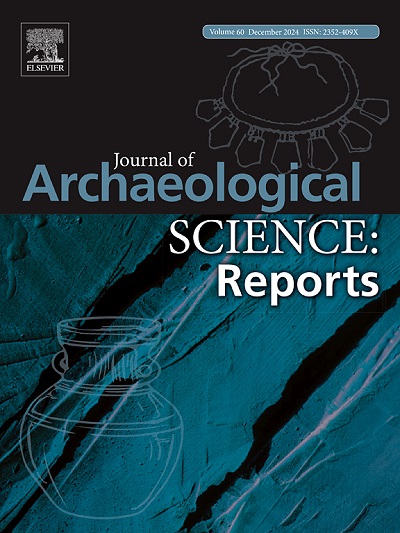Analysis of Early Iron Age / Classical period glass beads from Brili necropolis (Georgia)
IF 1.5
2区 历史学
0 ARCHAEOLOGY
引用次数: 0
Abstract
We present the analytical results obtained, using LA-ICP-MS, on a set of 77 glass beads, of various colours, dating to the Pre-classical and Classical period (8th to 4th c. BC) and originating from Brili necropolis (Georgia). This necropolis, located in the North-West of Georgia, in the historical Colchis region, was used continuously between the 15th c. BC and the 4th c. AD and was excavated periodically between 1939 and 1961. Through the comparison with published analytical data of coeval, earlier and later glass samples, the aim of this study is to investigate the provenance of this Brili assemblage in order to highlight the cultural influences and trading network of the Brili community during the Pre-classical and Classical period. The analysed glass beads are classified in three main groups and several sub-groups. The two main groups consist of Egyptian and Syro-Palestinian natron soda lime glasses (34 beads) on the one hand and high lithium, boron and magnesium mineral soda-lime glasses (34 beads) on the other. We also find a group of high magnesium, potassium and phosphorus plant ash soda-lime glass (9 beads) which up to now, was scarcely identified among Early Iron Age glass studies. Among this small group, one of the beads, characterized by lower phosphorus content, belongs probably to the well-established Mesopotamian soda-lime plant ash glass group.
格鲁吉亚布里利墓地早期铁器时代/古典时期玻璃珠分析
我们展示了使用LA-ICP-MS对77个不同颜色的玻璃珠进行分析的结果,这些玻璃珠可以追溯到前古典时期和古典时期(公元前8至4世纪),起源于布里利墓地(格鲁吉亚)。这个墓地位于格鲁吉亚西北部,位于历史悠久的科尔基斯地区,在公元前15世纪到公元4世纪之间一直在使用,并在1939年到1961年之间定期挖掘。通过与已发表的同时期早期和晚期玻璃样品的分析数据进行比较,本研究的目的是调查这种布里利组合的来源,以突出布里利社区在前古典和古典时期的文化影响和贸易网络。经分析的玻璃微珠可分为三大类和若干次大类。这两大类主要由埃及和叙利亚-巴勒斯坦钠钙玻璃(34颗)和高锂、硼和镁矿物钠钙玻璃(34颗)组成。我们还发现了一组高镁、高钾、高磷的植物灰钠石灰玻璃(9珠),迄今为止,在早期铁器时代的玻璃研究中很少发现。在这个小群体中,其中一个以磷含量较低为特征的珠状物可能属于已建立的美索不达米亚钠石灰植物灰玻璃群。
本文章由计算机程序翻译,如有差异,请以英文原文为准。
求助全文
约1分钟内获得全文
求助全文
来源期刊

Journal of Archaeological Science-Reports
ARCHAEOLOGY-
CiteScore
3.10
自引率
12.50%
发文量
405
期刊介绍:
Journal of Archaeological Science: Reports is aimed at archaeologists and scientists engaged with the application of scientific techniques and methodologies to all areas of archaeology. The journal focuses on the results of the application of scientific methods to archaeological problems and debates. It will provide a forum for reviews and scientific debate of issues in scientific archaeology and their impact in the wider subject. Journal of Archaeological Science: Reports will publish papers of excellent archaeological science, with regional or wider interest. This will include case studies, reviews and short papers where an established scientific technique sheds light on archaeological questions and debates.
 求助内容:
求助内容: 应助结果提醒方式:
应助结果提醒方式:


